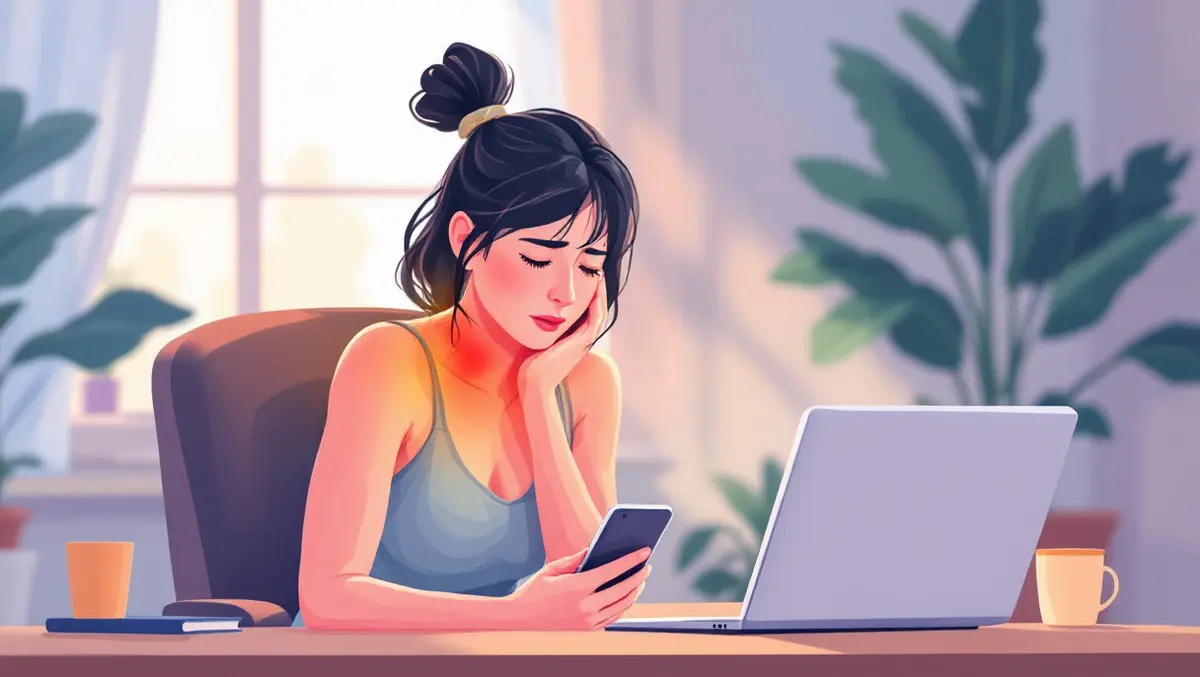
'Tech Neck' rising among women as study links pain to device use
New data from the Australian Chiropractors Association highlights the prevalence of neck pain, described as 'Tech Neck' or 'Tension Neck Syndrome', among Australians who use computers and gaming devices.
The findings indicate a marked difference in the experience of neck pain between female and male gamers, with 83% of female gamers reporting neck pain compared to 65% of male gamers.
The data also shows that women who engage in gaming for one to two hours are 60% more likely than men to experience neck pain. Among male gamers, those who take regular breaks report 33% less neck pain than those who do not take breaks.
Further examination of break habits among gamers found that women who take breaks still report a higher prevalence of neck pain compared to men. Specifically, 87.5% of women who took breaks experienced neck pain, compared to 53% of men, with 63% more women than men in this category reporting symptoms.
Ergonomic considerations appear to be limited, with only 9.6% of gamers using an ergonomic desk. The most common gaming position remains seated on an armchair or lounge; among those in this category, 74% reported experiencing neck pain.
Across all respondents, not just gamers, women and young people are the demographics most affected by neck pain associated with screen time, poor posture, and non-ergonomic device use. The Australian Chiropractors Association noted, "Technology really is a pain in the neck, especially for women, but there are simple adjustments users can make to minimise the physical impact of device use."
Broader findings from the national survey suggest 68% of women and 60% of men experience symptoms linked to their use of technology. Among women who do not take breaks from their devices, 85% report neck pain, compared to 61% who incorporate breaks. For smartphone users, 80% of those who rarely take breaks report neck pain, while 60% of those who take regular breaks experience similar issues.
Medication to manage neck pain is common, with 78% of respondents using over-the-counter pain relief, and 47% relying on prescription medication. The group identified as most affected is women aged 31 to 40, with 73% reporting neck pain.
Neck pain was reported to affect daily activities or movement for 70% of sufferers. In total, 64% of Australians reported experiencing neck pain in the past year—68% of women and 60% of men.
Among students, 71% of full-time students reported neck pain; female students were 63% more likely than male students to experience symptoms, at 81.8% versus 50%. Sedentary female workers also saw the highest rates of neck pain, being 22% more likely than their male counterparts to report symptoms (71.7% compared to 59%).
The national survey revealed that female laptop users who stretched or took a break every two hours were 24% less likely to report neck pain than those who only broke when already experiencing pain (69.6% compared to 86.1%).
Among workers undertaking repetitive movements or frequent pulling and pushing, 71% reported neck pain, the highest amongst workplace activity categories. Chiropractors surveyed found a marked rise in Tech Neck since the onset of the COVID-19 pandemic, with 34% reporting a "significant increase" in cases among teenagers and 29% among children.
A Deloitte Access Economics report referenced by the Australian Chiropractors Association estimated that musculoskeletal disorders, including Tech Neck, cost the Australian economy over AUD $55 billion annually through health spending, lost productivity, and reduced quality of life.
The Australian Chiropractors Association states the aim of Spinal Health Week is to highlight the growing prevalence of Tech Neck and encourage Australians to take steps to protect their spinal health in a technology-heavy environment.
The Association advises, "Australians must adjust their thinking around device use: break regularly, move often, improve posture, and interact with devices ergonomically. Those who adopt these habits report significantly less neck pain than those who don't."


